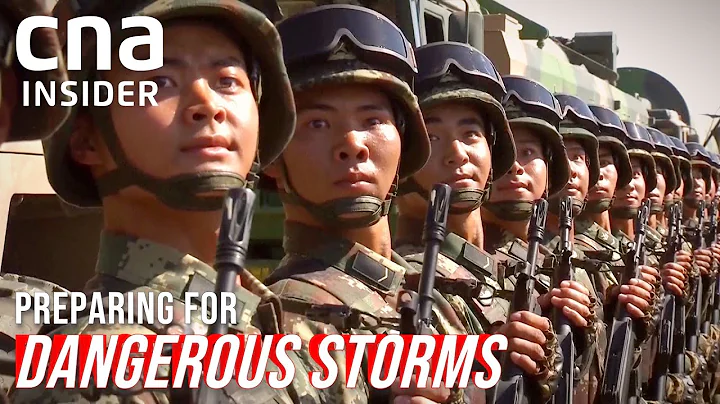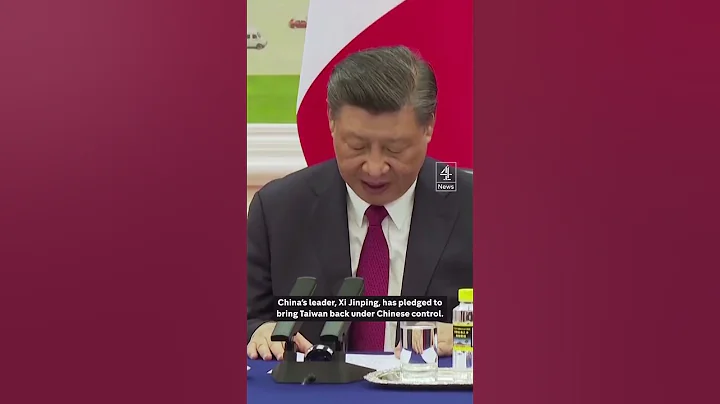
A recent report by a US strategic think tank pointed out that the US military’s military advantage in the Western Pacific has changed and a new Taiwan Strait deterrence strategy must be formulated. The picture shows an F-35 fighter jet taking off from Alaska. (Photo/U.S. Air Force)
With the rapid rise of the People's Liberation Army's military power, international military experts believe that the security situation in the Western Pacific has undergone fundamental changes, and the U.S. military's rear Guam base has also been exposed to the threat from China. After a drill last year in which the People's Liberation Army bombed a runway in Guam, U.S. military experts believed that the U.S. military's advantage in the Western Pacific has been weakened, and the current Taiwan Strait strategy is no longer financially sustainable. A new Taiwan Strait deterrence strategy must be formulated while also It is suggested that the United States should avoid seeking to establish an alliance similar to NATO in Asia, and should not openly include Taiwan in regional organizations of its allies and partners.
According to US media reports, the purpose of the exercise held early last year was to train Air Force ground crews to quickly repair the bombed runway at the Guam base so that F-35 fighter jets taking off from Eielson Base in Alaska could land safely at the Guam base. The exercise may seem ordinary, but it reveals a new reality faced by the US military in Asia. That is, the rise of China's military power is causing fundamental changes in the strategic security situation in the Western Pacific. Even the Guam base in the rear, which was once considered absolutely safe, is also facing a new reality. Already under threat from China.
Rachel Esplin Odell, an expert on China issues, said at a recent seminar that although the US military is powerful, its military advantage has been severely weakened. Its ability to take into account Asia is increasingly limited, and efforts to rebuild regional military advantages in the Western Pacific are unlikely. success.
reported that in the face of this increasingly severe reality, a research report jointly written by 10 US security experts, including Du Ruiqing, said that the current Taiwan Strait strategy is financially unsustainable and may exacerbate the crisis. The United States must develop a new Taiwan Strait deterrence strategy that is convincing and affordable for its national strength, and step up efforts to urge Taiwan to improve its asymmetric combat capabilities, focus on developing its army, and significantly reduce investment in naval and air force.
This research report was convened by the Quincy Institute, a think tank. Participants include former senior officials and top experts in foreign affairs, intelligence, budget and other departments. The 300-page report is titled "Active Denial: A Roadmap for a More Effective, Stable, and Sustainable U.S. Defense Strategy in Asia." It is one of the most important U.S. research reports on Asia-Pacific security and Taiwan issues in recent years. one. The
report pointed out that if the United States and China fight on a central battlefield that is equidistant from the two countries, China may be vulnerable. However, the U.S. military stationed in the region often accounts for less than 10% of its military strength, and Taiwan is only more than 100 kilometers away from mainland China. The United States has only two air force bases in Northeast Asia, Kadena and Futenma, while the People's Liberation Army Air Force and Naval Air Forces have 39 air force bases within range that do not require aerial refueling, as well as dozens of air forces further away from the coast. base. It is also impossible for the United States to significantly increase military expenditures in order to increase its military power in Asia. Although the Indo-Pacific Command has more than half of the US Navy's naval ships and submarines, most of them are deployed in Hawaii and the West Coast of the United States, which is in conflict with potential conflict areas. Nearly half a world away, and the proximity of potential conflict areas to China would negate many of America's advantages.

The Asian Defense Strategic Roadmap report produced by the Quincy Institute is 300 pages long. The report lists a comparison map of the bases that the Chinese and American militaries can use in the Asia-Pacific region. The gap between the two sides is extremely huge. The red in the picture is the Chinese base, and the blue is the American base. (Photo/Quincy Institute) The
research report also suggests that while strengthening allies in Asia and Taiwan increasing defense investment, the United States should also be careful not to exacerbate the security dilemma with China. For example, the four-party dialogue mechanism between the United States, Japan, India, and Australia will Threats have been put on the agenda, and NATO has also increased its ties with countries such as Australia and Japan. Such a multilateral military alliance would further stoke China's fear of encirclement, and the resulting risks would outweigh the potential deterrence benefits.In addition, experts urge the U.S. government not to overtly include Taiwan in regional groups of its allies and partners or view Taiwan as a strategic asset that can be used against Beijing, as doing so risks weakening deterrence against China and may make the People's Liberation Army think that The only way to safeguard core interests is through military solutions. Michael Swaine, one of the authors of the
report and chief director of the East Asia Program at the Quincy Institute of National Affairs, said at a discussion that the United States must send out more credible policy statements and signals to convince Beijing of the United States’ one-China policy This could be a public statement setting out limits on the level and type of leadership engagement and defense ties between Washington and Taipei.




















![中国军歌[人民军队忠于党] 中国軍歌[人民の軍隊は党に忠実だ] 【和訳付】Chinese military song [People's Army is loyal to the party] - DayDayNews](https://i.ytimg.com/vi/Lu6Nf7oaDEE/hqdefault.jpg?sqp=-oaymwEcCOADEI4CSFXyq4qpAw4IARUAAIhCGAFwAcABBg==&rs=AOn4CLBQTgXr40IdPd8MXVhXmzf2r3eWkA)
